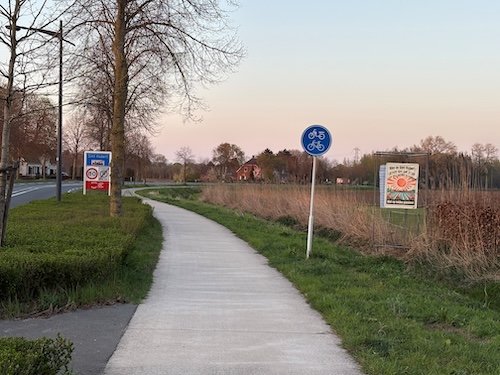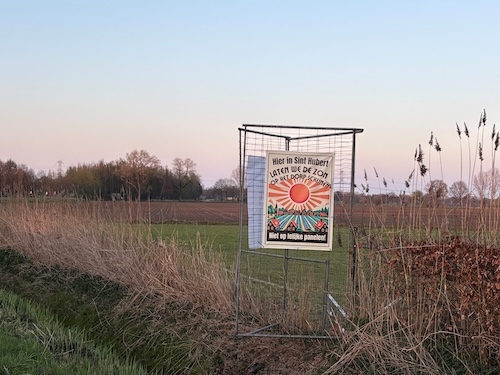Updates
A Ticket System for Government (Or: Let’s Finally Give the Ombudsman Teeth)
The ombudsman, as it stands, is a shark without teeth. It cannot even smell a scandal if it was bleeding before their eyes — can’t sense, can’t bite, can’t act, can’t fix. It’s a watchdog with no jaws. So let’s give it an upgrade or even better give the government such an upgrade that Ombudsman loses the necessity for their entire existence.
This isn’t some grand ideological revolution. It’s just a silly idea for a public ticket system. Silly, but powerful.
Imagine a civic ticket system — not buried in obscure forms, not locked in back-office email chains. Just like an internal help-desk, but for governance. Public, structured, traceable. And smart.
This is what it looks like.
Core Idea
Citizens should be able to report issues publicly — not buried in anonymous inboxes, not hidden behind “ongoing investigation” seals. People already talk about public issues. If people can talk about public issues with their friends, why can’t they track them together too?
A government ticket system could work just like internal systems in IT or customer service — but with a civic twist.
This is not a place for endless debate. It’s a structure to frame problem → proposal → response, cleanly and traceable.
This system proposes a transparent, iterative problem-solving interface where AI is used not to obscure, but to clarify.
The System: Public, AI-Structured, and Transparent
The system is made up of 4 stages — and yes, it uses AI — but only as a tool to help people sharpen what they’re already saying.
Every issue goes through this cycle:
1. Problem Description
a) Citizens submit an issue.
b) The AI cleans up the language, consolidates overlapping inputs, and upgrades the coherence of the report.
c) A public change-log shows the input that evolved the description — all steps visible, all input attributable.
2. Proposed Solution
a) Based on the refined problem description, the AI drafts a solution or possible action path.
b) This is visible to the public as a formal response — no magic, just structured reasoning.
c) This is not a decision. It’s a draft — structured logic, not authority. Only advice.
3. Critique Layer
a) Citizens respond to the proposed solution — a structured challenge to the proposal..
b) Their remarks are also structured by AI — not censored, but upgraded for clarity and grouped by theme or angle.
c) Again, change-logs and input trails are visible. No anonymous edits. No hidden manipulations.
d) in a sense this is the same as step 1 (problem description)
4. Upgraded Solution
a) The AI integrates valid critiques and proposes a refined version of the solution.
b) This is the “feedback-reinforced” stage, where the system attempts synthesis, not endless argument loops.
All stages remain visible — including abandoned tickets, failed resolutions, and ongoing ones. This creates a living public record of issues and proposed governance responses.
This is the synthesis. 1 = 2 + 3 = 4.
Why This Matters
- It forces clarity and traceability. No more vague complaints floating in chaos.
- It turns public input into a collaborative upgrade process.
- It shows which tickets are being handled, stalled, ignored — in plain sight.
- It makes every AI edit accountable, not mysterious.
- It doesn’t replace the ombudsman — it arms them.
Business Model? Sure — But Keep It Public
Yes, this is a product. But no, it shouldn’t be commercialized. This is civic infrastructure. It belongs to the commons.
It could be sold to municipalities, NGOs, or transparency coalitions — but that defeats the purpose.
Build it, release it, and let it run at zero cost. The public has already paid for enough systems that don’t work. This one should.
The value lies not in monetization — but in legitimacy.
Expanded Use: From Complaint Board to Administrative Operating System
What starts as a feedback tool can evolve into a complete civic engine. The system can scale:
- Reported Issue
- Processed Issue (by a public servant or automated filter)
- AI-generated remark on process adequacy (4-stages again)
- Re-open option if resolution was insufficient (4-stages again)
- Cross-department visibility and workflow mapping
- The ticket can go through different departments and the work of each department remains visible.
Each issue flows like a case file, but it’s public-facing and structurally transparent. Departments can adopt the system internally. Citizens and officials see the same state of the case. Updates are traceable.
With enough refinement, this system could even approach pre-judicial arbitration or replace lower-level administrative courts — especially for predictable, repeatable types of disputes (benefits, housing, permit denials, etc.).
At some point a judge and lawyer can then bend over the case after it went through these 3 steps.
Design Philosophy
- Public by default.
- AI-enhanced, not AI-obscured.
- Built around iteration, not resolution-hiding.
- Input is traceable. Reasoning is legible. Logic is public.
- Not built to silence citizens with forms — but to cohere chaos into clarity.
Potential Impact:
If deployed at scale, this would:
- Reduce performative complaint culture (“I ranted online!”) in favor of traceable input.
- Provide oversight journalists and watchdogs with live case data.
- Offer civil servants a way to separate noise from signal.
- Create longitudinal accountability: we’d know what failed, what improved, and why.
- We can track government efficiency through details such as backlog and amount of re-opened cases
Final Thought
Let’s stop treating public concern like noise.
Let’s give it a ticket.
Let’s give the ombudsman jaws.
Give people a way to speak clearly. Let the problems stay visible. Let the fixes be criticized. Let the system evolve in full view.
Democracy doesn’t die in darkness — it suffocates in forms. We’ve normalized arbitrary bureaucracy and opaque complaint systems. But the technology to upgrade them exists. All we’re missing is the will — and the will can be crowd-sourced.
Written by Artorius Magnus
https://tinyurl.com/laconic-utopia World-Peace suggestions @250 articles highschool dropout-autodidact (unofficially 5+ PhD's).
Dankbaar voor jullie steun
Wat ben ik ongelofelijk dankbaar dat zoveel mensen hun stem hebben laten horen en de petitie hebben ondertekend voor het behoud van het speciaal onderwijs. Elke handtekening is een krachtig signaal: dat wij samen opstaan voor kinderen die deze vorm van onderwijs hard nodig hebben en wij dat deze kinderen niet mogen worden vergeten.
Dank jullie wel voor jullie betrokkenheid en jullie solidariteit. Samen geven wij deze kinderen een stem. Samen maken wij dan ook écht het verschil!
Omroep Brabant besteedt aandacht aan petitie VOOR
Vandaag heeft Omroep Brabant mij geïnterviewd in de Bibliotheek van Uden over deze petitie. Dat was best even spannend en toch gedaan! Hopelijk helpt dit om het "andere" geluid te laten zien/horen.
Dank in ieder geval voor jullie steun tot nu toe! Om 17.30 uur komt deze online te staan.
Petitie gaat naar de provincie
tot nu toe al 122 keer ondertekend! Dat is veel in korte tijd, het onderwerp leeft in Dorst. Gisteravond is tijdens de inloopavond de tekst van de petitie met handtekeningen en de tekst van het toelichtend praatje alvast overhandigd aan de projectmedewerkers van de provincie.
De petitie gaan we binnenkort officieel overhandigen aan leden van de provinciale staten in Den Bosch, onze volksvertegenwooridgers, die voor ons in actie moeten komen. Zij zijn ook wettelijk verplicht om een antwoord te geven op een petitie. Omdat er nog steeds ondertekend wordt, laten we de petitie langer openstaan. Stuur dus gerust de link door aan mensen in Dorst, die er nog niet van op de hoogte zijn.
Bericht naar de raadsleden verstuurd, petitie blijft nog open staan
Geachte raadsleden, 16-04-2025
Ik wil jullie laten weten dat er ook inwoners van de Maashorst zijn die vinden dat we vooral door moeten gaan met het opvangen van vluchtelingen. Het harde geluid van een kleine groep vult het nieuws, terwijl velen van ons zich stilhouden uit angst voor confrontaties.
Naar aanleiding van de ongeregeldheden vorige week woensdag is er een petitie gestart om het "andere geluid" te laten horen. Inmiddels hebben in een korte tijd 294 mensen de petitie ondertekent. De petitie blijft nog even open staan om mensen de kans te geven om zich te uiten.
Alle tekenaars bedankt
De raadsvergadering is gisteren geweest, de Rhenense Gemeenteraad heeft zonder enige vragen te stellen, zonder enig bezwaar, de intentie van B&W voor het opzeggen van het huurcontract van Canis Cunerae goedgekeurd..
Niet tegen opvang van vluchtelingen uit oorlogsgebieden
Wij zijn niet tegen de opvang van gezinnen uit oorlogsgebieden. Maar wel tegen de opvang van alleenreizende jonge mannen uit veilige landen welke niets goeds van doen hebben, waar Nederland momenteel van overloopt..
Nu is het moment – red het Limburgse Heuvelland van zonneweides!
Beste ondertekenaar,
Twee jaar geleden liet jij samen met bijna 1500 (!!) anderen van je horen: géén zonneweides in het Limburgse Heuvelland! Dankzij jullie massale steun hebben we toen een krachtig signaal afgegeven. Maar nu is het menens.
Deze maand neemt de gemeenteraad van Voerendaal een besluit over de aanleg van de eerste zonneweide.
Als we nu geen actie ondernemen, dreigt ons unieke Heuvelland verder te verrommelen en voorgoed te veranderen.
Teken de nieuwe petitie en geef opnieuw een krachtig signaal af: nieuwe petitie
Bescherm het open landschap + Behoud het karakter van ons Heuvelland + Zeg nee tegen grootschalige zonneweides op waardevolle natuur- en landbouwgrond
Laat jouw stem opnieuw horen. Deel de petitie ook met je netwerk – samen kunnen we het tij keren.
Met hartelijke groet, Groen Hart voor Heuvelland

